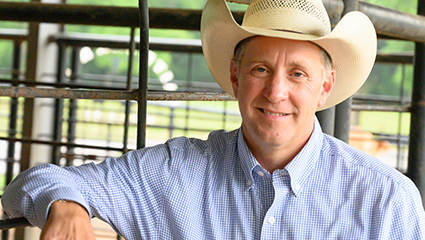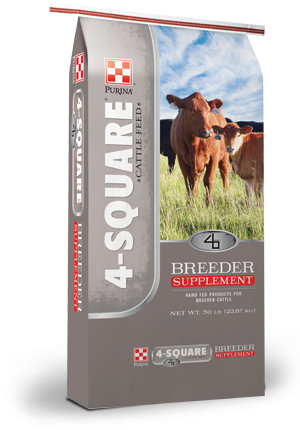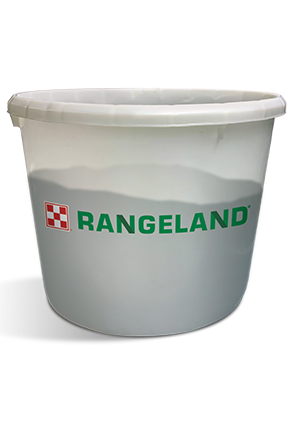
Don’t Let Forage be a Gap in Winter Cattle Nutrition
Management : Cow & Calf
Nutrition : Supplements
Nutrition : Forage
Poor growing conditions may have taken a toll on the quantity and quality of forage available – making cattle nutrition tricky to navigate going into winter.
For regions that received rain in the summer, forage quality is the biggest concern during the winter. Delayed cuttings create the perfect storm for overly mature hay, which increases fiber and decreases protein. On the other hand, summer drought conditions can stunt forage growth, increasing stem-to-leaf ratio while decreasing digestibility and quality.
The good news is there are strategies you can take to maximize your available forages to support cattle nutrient requirements during winter and spring.
Low-quality forage compromises a cow’s ability to eat enough to meet her nutritional demands. As cows enter their third trimester, their nutrient requirements increase. As a result, feeding low-quality forages may not meet cow requirements, causing decreased body condition scores and ultimately lead to problems with calving, milk production and conception.
Forage testing can minimize risks associated with feeding low-quality forages. Test results can help you determine if the forage can sustain the herd and, if not, how much supplemental nutrition is needed to meet the herd’s nutritional requirements. Working alongside a nutritionist, the test results will influence feeding strategies and feed purchase decisions. The cost per day of the forage and supplement required needs to be compared to alternatives such as purchased forages or dry lot feeding in order to make the appropriate economic decision.
Dry growing seasons can also cause silage and hay to test high in nitrates. If fed in high quantities, nitrates can be unsafe for cattle to consume, with aborted pregnancies and cattle deaths being the worst-case scenario. Dilute high-nitrate forages by blending with other forages or feeds with low nitrate risk. If you’re using a blend of high and low-risk forages, limit feed as much as possible. Free-choice feeding could still result in cattle health challenges.
And, because all forages are deficient in trace minerals, providing an adequate, year-round mineral supply is important. Trace minerals aid with various functions, including immune response, growth, reproduction and fiber digestion.
Supplementing vitamins is another integral part of any feeding strategy, especially if feeding low-quality straws or stovers, as these forages often have a vitamin A deficiency. Products such as Purina® Wind and Rain® minerals can fill vitamin and mineral deficiency gaps to ensure your cattle receive the nutrition they need for optimal performance.
Start by focusing on cattle with higher nutrient requirements, such as cows less than three years of age or cattle near calving. Supplement low-quality forages with any available high-quality forages, so cattle don’t miss out on key nutrients at these critical times.
Different feeding management strategies can also maximize available forage. Low-quality forages tend to have a high stem-to-leaf ratio, increasing the risk of sorting and resulting in more waste. Processing bales and blending with other ingredients can increase forage utilization and reduce feed waste. Mixing Purina® 4-Square® Breeder Cubes into blended feeds can also help balance nutrient deficiencies.
Filling gaps in forage quality or quantity with a balanced supplementation plan is vital to a successful nutrition program in winter and will aid in the long-term profitability of your herd.
Does your cattle nutrition program stack up? Find out with a Proof Pays trial.
For regions that received rain in the summer, forage quality is the biggest concern during the winter. Delayed cuttings create the perfect storm for overly mature hay, which increases fiber and decreases protein. On the other hand, summer drought conditions can stunt forage growth, increasing stem-to-leaf ratio while decreasing digestibility and quality.
The good news is there are strategies you can take to maximize your available forages to support cattle nutrient requirements during winter and spring.
Test forage quality
A forage quality test is often the first step to managing available forage and assessing nutritional gaps in the diet.Low-quality forage compromises a cow’s ability to eat enough to meet her nutritional demands. As cows enter their third trimester, their nutrient requirements increase. As a result, feeding low-quality forages may not meet cow requirements, causing decreased body condition scores and ultimately lead to problems with calving, milk production and conception.
Forage testing can minimize risks associated with feeding low-quality forages. Test results can help you determine if the forage can sustain the herd and, if not, how much supplemental nutrition is needed to meet the herd’s nutritional requirements. Working alongside a nutritionist, the test results will influence feeding strategies and feed purchase decisions. The cost per day of the forage and supplement required needs to be compared to alternatives such as purchased forages or dry lot feeding in order to make the appropriate economic decision.
Dry growing seasons can also cause silage and hay to test high in nitrates. If fed in high quantities, nitrates can be unsafe for cattle to consume, with aborted pregnancies and cattle deaths being the worst-case scenario. Dilute high-nitrate forages by blending with other forages or feeds with low nitrate risk. If you’re using a blend of high and low-risk forages, limit feed as much as possible. Free-choice feeding could still result in cattle health challenges.
Nutrient deficient forages
As forages decrease in quality, they can develop a deficiency in protein or energy. Warm-season forages typically become deficient in protein first, requiring protein supplementation. On the flip side, cool-season forages might be adequate in protein but deficient in energy instead. Testing these forages will pinpoint which nutrients need supplementing. As a benchmark, forages with lower than 9% protein will require protein supplementation. If standing forage is still available in the pasture, utilize Purina® RangeLand® protein tubs or Purina® Accuration® blocks or liquid to meet protein and energy needs.And, because all forages are deficient in trace minerals, providing an adequate, year-round mineral supply is important. Trace minerals aid with various functions, including immune response, growth, reproduction and fiber digestion.
Supplementing vitamins is another integral part of any feeding strategy, especially if feeding low-quality straws or stovers, as these forages often have a vitamin A deficiency. Products such as Purina® Wind and Rain® minerals can fill vitamin and mineral deficiency gaps to ensure your cattle receive the nutrition they need for optimal performance.
Maximize available forage
When faced with limited forage availability, you don’t need to throw in the towel altogether. Use these strategies to make the most of the forages you do have.Start by focusing on cattle with higher nutrient requirements, such as cows less than three years of age or cattle near calving. Supplement low-quality forages with any available high-quality forages, so cattle don’t miss out on key nutrients at these critical times.
Different feeding management strategies can also maximize available forage. Low-quality forages tend to have a high stem-to-leaf ratio, increasing the risk of sorting and resulting in more waste. Processing bales and blending with other ingredients can increase forage utilization and reduce feed waste. Mixing Purina® 4-Square® Breeder Cubes into blended feeds can also help balance nutrient deficiencies.
Filling gaps in forage quality or quantity with a balanced supplementation plan is vital to a successful nutrition program in winter and will aid in the long-term profitability of your herd.
Does your cattle nutrition program stack up? Find out with a Proof Pays trial.



